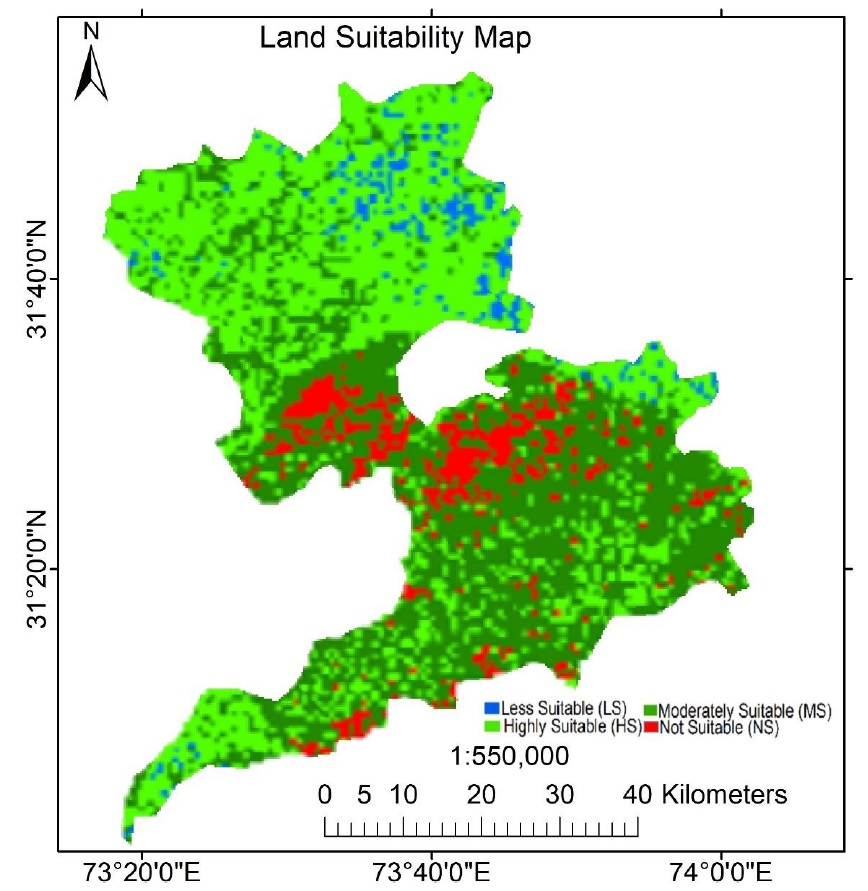Estimation of Net Primary Production of Rice Crop using CASA model in Nankana Sahib
Keywords:
Net Primary Production, Rice Growth Period, Light Use Efficiency, Water stress and PhotosynthesisAbstract
Estimation of Net Primary Production (NPP) is crucial for the supply of food/wood. Precise estimates of NPP are important for sustainable development. We used Light Use Efficiency (LUE) model to appraise various growth-related processes e.g., photosynthesis, respiration and transpiration, in the rice plant. The study site received 1213 actual sunshine hours in comparison to total possible sunshine hours which were 1595 during the complete Rice Growth Period (RGP). Water stress was estimated throughout the RGP which resulted in surplus of water in early growth stages (W=53) and deficiency in the final ripening stage with W=0.14. Careful results indicate that about 5128 kg/ha of wet biomass was generated during the complete RGP. We applied a harvest index of 0.50 to estimate the dry biomass that was 2564 kg/ha which is about (2.82 ton/ha). These estimates seem to be in exaggeration according to real time field estimates collected by Crop Reporting Service (CRS) department which were (1.83 ton/ha). To manage this exaggeration, we applied the Soil Suitability Constant (ħα) which resulted as 1.99 ton/ha in suitable zone, 1.21 ton/ha in less suitable, 1.76 ton/ha in moderately suitable and 0.73 ton/ha in not suitable zones. The average yield was estimated as 1.62 ton/ha. According to CRS department, the rice area in the study site was reported as 107000 ha and the net rice production was estimated as 1,73,340 tons in the study site. The LUE model is reliable to estimate NPP of rice crop which is useful for decision makers to determine the contribution of rice in Gross Domestic Product (GDP) at regional scales in term of surplus or shortfall.


















